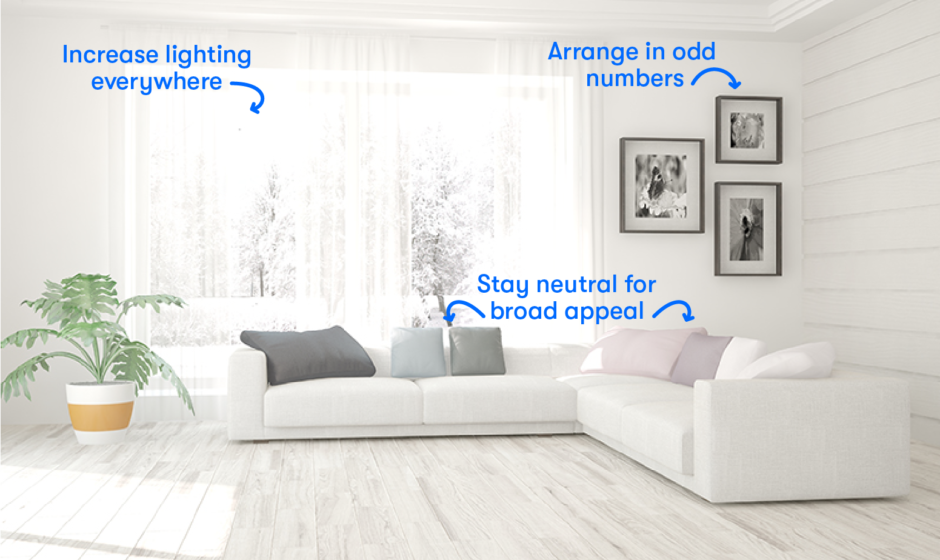When it comes to selling your home, first impressions matter. Staging your home can make a significant difference in how quickly it sells and at what price. Effective home staging showcases your property’s best features. It allows potential buyers to envision themselves living there. As a leading real estate marketing company, we understand the importance of staging in the selling process. In this article, we will explore how to stage your home for a quick sale, ensuring you get the best offers.
Understanding the Basics of Home Staging
Home staging is the art of preparing your home for sale. It involves creating an inviting atmosphere that appeals to buyers. Good staging highlights the home’s strengths while minimizing its weaknesses. Studies show that staged homes sell faster than non-staged ones. Buyers can easily see themselves in a well-staged home. This emotional connection is crucial in the buying process.
Declutter and Depersonalize
The first step in staging your home is to declutter. Clutter makes spaces feel smaller and chaotic. Start by going through each room. Remove any items you don’t need or use regularly. Consider donating, recycling, or storing items that are not essential.
Next, depersonalize your space. Remove family photos, personal artwork, and other items that reflect your personal life. This allows potential buyers to imagine their own lives in the home. A neutral space can help them visualize their future there.
Deep Cleaning Your Home
A clean home is more appealing to buyers. Before showing your home, take the time to deep clean every area. Start with the basics like vacuuming and dusting. Don’t forget often-overlooked areas such as baseboards, light fixtures, and ceiling fans.
Pay extra attention to kitchens and bathrooms. These areas are critical for buyers. Make sure countertops are clear and surfaces are sparkling. A clean home not only looks good but also shows that you care for the property.
Neutralize Your Space
When staging your home, consider using neutral colors. Neutral shades appeal to a wider audience. They create a calm and inviting atmosphere. If your walls are brightly colored, consider repainting them in soft beige, gray, or white.
This does not mean your home has to be bland. Add color through accessories, like cushions, rugs, or artwork. This way, you can create a welcoming environment without overwhelming buyers. Neutral decor allows potential buyers to picture their own style in the home.
Enhance Curb Appeal
Curb appeal is the first thing buyers notice. Make sure your home looks inviting from the outside. Start with your front yard. Mow the lawn, trim the bushes, and remove any weeds. Planting colorful flowers can add a touch of brightness.
Next, pay attention to your front entrance. A clean, well-painted front door makes a great first impression. Consider adding new house numbers or a stylish welcome mat. All these small touches can make a big difference in attracting buyers.
Arrange Furniture for Flow and Space
How you arrange furniture plays a crucial role in staging. Aim for a layout that maximizes space and flow. Remove any oversized furniture that makes rooms feel cramped. Instead, opt for smaller pieces that allow for easy movement.
Focus on highlighting the room’s best features. Arrange furniture to create a clear focal point, such as a fireplace or large window. Ensure that pathways are clear and that each room feels open and inviting. Good furniture arrangement can help buyers see the home’s potential.
Use Lighting to Your Advantage
Lighting can dramatically affect the mood of a space. A well-lit home feels warm and inviting. Start by maximizing natural light. Open curtains and blinds to let in as much sunlight as possible. Clean windows inside and out for a clearer view.
In addition to natural light, consider using lamps and other lighting sources. Use soft, warm bulbs to create a cozy atmosphere. Layer lighting by using different sources in each room, such as overhead lights, table lamps, and floor lamps. Proper lighting can make your home feel more spacious and welcoming.
Add Finishing Touches
Once the main staging tasks are complete, it’s time for the finishing touches. Small details can have a big impact. Consider adding fresh flowers to brighten up the space. Place them on dining tables or kitchen counters for a pop of color.
Scent is also important in staging. Use subtle fragrances to create a pleasant atmosphere. Consider light, fresh scents like lemon or vanilla. Avoid overpowering fragrances that might be off-putting.
Stylish decor items can also enhance your home’s appeal. Choose a few tasteful accessories, like decorative pillows, art pieces, or books, to add character without cluttering. These finishing touches can make your home feel more inviting.
Consider Professional Staging Services
If you find staging overwhelming, consider hiring a professional stager. Professionals have the experience and knowledge to highlight your home’s strengths effectively. They understand buyer preferences and can provide valuable insights.
While hiring a professional may come with a cost, it can be a wise investment. A well-staged home can sell faster and potentially at a higher price. Look for reputable staging companies in your area and read reviews before making a choice. Learn More
Conclusion
Staging your home for a quick sale can significantly impact your selling experience. By decluttering, deep cleaning, and enhancing curb appeal, you can create an inviting environment that attracts buyers. Using neutral colors, arranging furniture wisely, and adding finishing touches will help buyers see your home’s potential.
Consider the option of professional staging if you need assistance. The goal is to create a space where buyers feel at home and can easily envision their lives. By following these tips, you can stage your home effectively and increase your chances of a swift and profitable sale.



